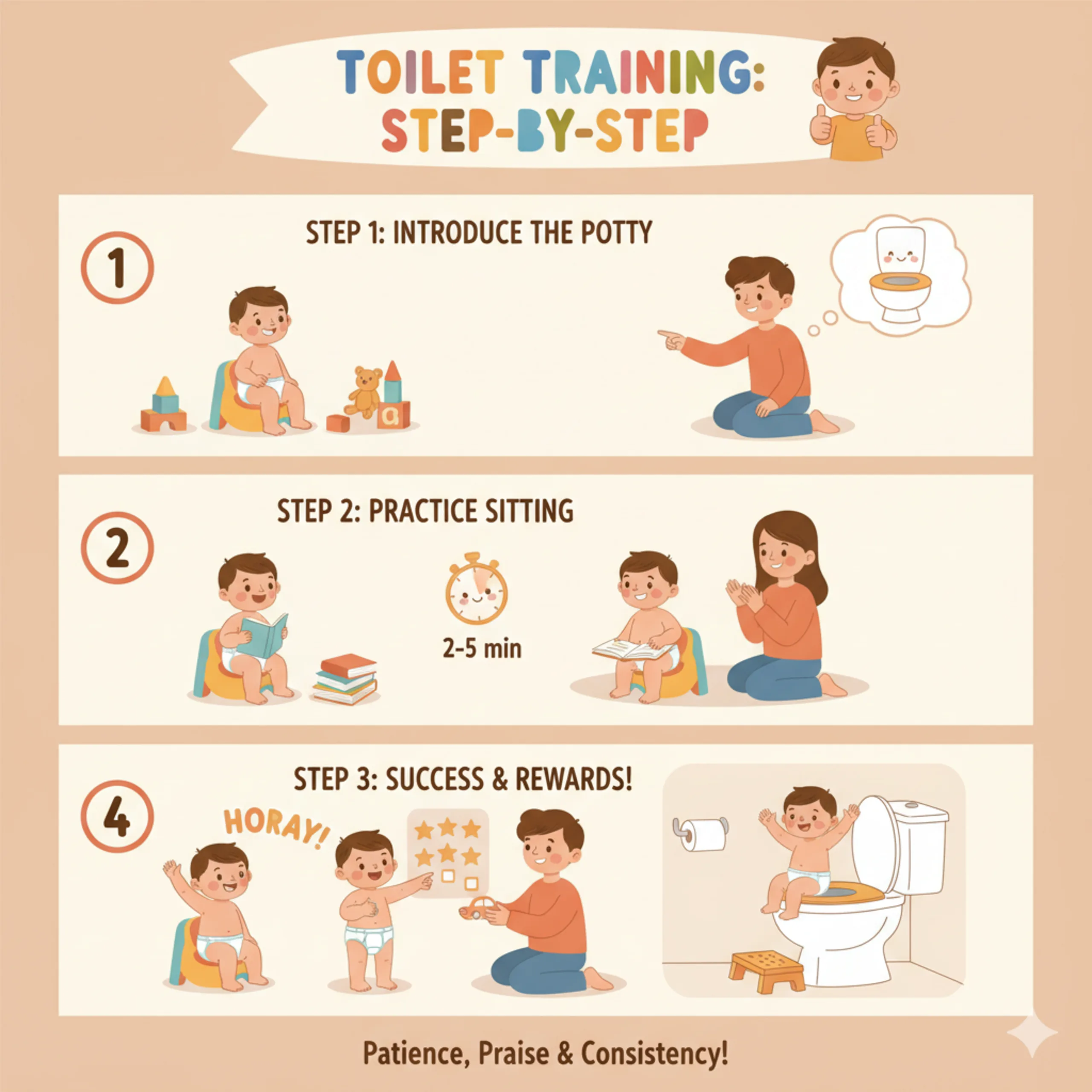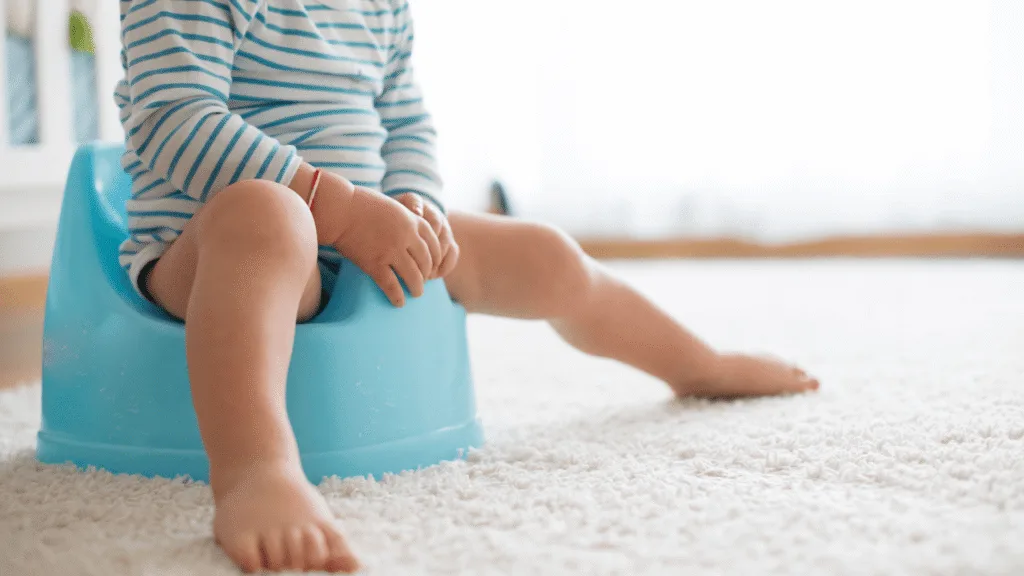Toilet training is one of the biggest milestones in a child’s early years. It marks the transition from nappies to independence and can make everyday life easier for the whole family. But many parents wonder when to start toilet training, how long it takes, and what the best methods are. With so much conflicting potty-training advice out there, it can be overwhelming to know the right approach. This guide breaks down the steps, offering clear and practical information for Australian families navigating the toilet training journey.
Signs That Your Child is Ready for Toilet Training
There is no single best age to toilet train. Most children show signs of readiness somewhere between 18 months and three years, although some may start earlier or later. Rather than focusing on age, it’s more important to watch for cues. Your toddler might be ready if they:
- Stay dry for two or more hours at a time
- Show awareness of wees and poos by telling you or using gestures
- Dislike wearing a wet or soiled nappy
- Can pull their pants up and down
- Follow simple instructions
- Show curiosity about the toilet or watching others use it
Every child develops differently, so don’t feel pressured if your toddler isn’t ready when others are. Toilet training works best when your child is both physically and emotionally prepared.
Choosing the Right Equipment
When you begin potty training, having the right tools can make the process smoother:
- Potty or toilet insert seat – whichever feels less intimidating for your child
- Step stool – helps them reach the toilet or sink
- Training pants or pull-ups – provide a bridge between nappies and underwear
- Big-kid undies – letting your child choose their own can make training exciting
For many children, moving out of nappies feels like a big achievement worth celebrating.
Preparing Your Child for Toilet Training
Preparation is just as important as the training itself. You can help your toddler get ready by:
- Using words like “wee,” “poo,” and “toilet” so they understand the language
- Putting wet or dirty nappies into the potty to show its purpose
- Letting them watch trusted family members in the bathroom
- Offering short practice sessions with training pants
- Ensuring a fibre-rich diet and plenty of fluids to prevent constipation
The more familiar your child is with the idea, the easier the transition will be.
How to Start Toilet Training Step by Step
Parents often ask, “How do you start potty training?” The key is to keep it simple and consistent.

- Choose the right time – Avoid big life changes like moving house or holidays.
- Create a routine – Encourage sitting on the potty or toilet after meals, before bed, and when showing signs like fidgeting or hiding.
- Stay positive – Praise your child for trying, even if nothing happens. Sticker charts or rewards can help keep motivation high.
- Dress for success – Loose, elastic-waist pants are easier than zips or buttons.
- Expect accidents – Stay calm, clean up, and encourage them to try again.
Patience and consistency will make the process smoother for both you and your child.
Toilet Training Boys and Girls
The main steps are the same for both, but there are a few small differences:
- Many boys start sitting down to wee before moving to standing. Some parents make this fun with games, like aiming at a ping pong ball.
- Girls should always be taught to wipe from front to back to prevent infection.
- Both boys and girls should learn hand washing as part of the routine.
Toilet Training While Out and About
At some point you’ll need to leave the house during training. Planning ahead helps:
- Know where the nearest toilets are at new locations
- Pack spare clothes, undies, and a plastic bag for accidents
- Let carers, grandparents, or childcare staff know your child is in training
Handling Accidents and Setbacks
Setbacks are completely normal. Some children regress after early success or resist altogether. Stay calm and supportive:
- Reassure your child and encourage them to keep trying
- Avoid punishment or shame, which can create anxiety
- Speak to your GP or child health nurse if your child struggles consistently beyond age five
Staying Dry Overnight
Night training usually takes much longer than daytime training. Signs of readiness include waking up with a dry nappy several mornings in a row.
Helpful strategies:
- Use waterproof mattress protectors
- Encourage a final toilet visit before bedtime
- Reassure your child if accidents happen
Remember, bedwetting is common, even in school-aged children, and usually improves with time.
How Long Does Toilet Training Take?
There’s no set timeline. Some toddlers master it in a few days, while others need weeks or months. Poos often take longer than wees. The most important factors are consistency, encouragement, and patience.
Conclusion: Growing Through Challenges at Learning Blocks Dural
At Learning Blocks Dural, we know that toilet training can be one of the trickiest milestones for both families and educators. Just like at home, our team faces the ups and downs – from accidents and setbacks to those little wins worth celebrating. It takes patience, consistency and a lot of understanding to guide toddlers through this stage, and we recognise that progress doesn’t always happen overnight.
By working through the challenges alongside children, we’re not just helping them learn to use the toilet – we’re building their confidence, independence and resilience. Each small success shows them they are capable, and each setback becomes another chance to practise patience and care.
Toilet training may be messy and sometimes frustrating, but at Learning Blocks Dural, we see it as part of a bigger journey. Through gentle guidance, encouragement and teamwork with families, we help every child move one step closer to independence – and remind them, and ourselves, that the struggle is part of the growth.












